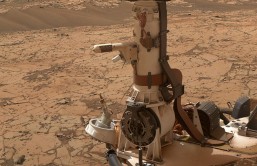Japan had a successful test launch of its space cannon Hayabusa-2 on Thursday. The new weapon is scheduled to blast a crater in outer space to investigate an asteroid on 2018.
Hayabusa-2 is the second of Japan Aerospace Exploration Agency (JAXA) space cannon designed to investigate on asteroids in the outer space. Its predecessor Hayabusa was able to gather surface particles from a space rock shaped like a potato. The samples it brought back to earth in 2010 may have undergone several transitions after exposures to different types of atmospheric energies.
JAXA is the aerospace agency of the Japan. Its purpose is to advance research and technological development, as well as to launch observatory satellites and other exploratory missions.
JAXA is hopeful that the Hayabusa-2 would further the achievements of the previous space cannon through the asteroid 1999JU3, which according to scientists has more potential than most asteroids in containing evidence of the foundations of life. They said that the massive cannon is planned to blast the asteroid surface with a metal bullet by the year 2018.
The space cannon will be launched next year in the JAXA rocket H2A, which is based in the southern part of Japan. Hayabusa-2 will be blasted in a course which will channel the cannon towards the asteroid.
After four years of space travel, it will arrive at the asteroid’s atmosphere where it will release its cannon to the asteroid’s surface. The mother ship will then navigate toward the farther side of the asteroid to avoid getting hit by any resulting shrapnel or debris from the upcoming explosion.
Once the Hayabusa-2 is safe from any damage, the cannon that floated down the asteroid’s surface will blow up letting a huge bullet deep into the crater. After the dust has settled, the mother ship will go back to land on the surface and gather samples from the ground which was broken by the explosion. The scientists are hoping to get dust particles containing organic substances or some indications of water presence.
According to JAXA, the scientific evidence to be collected from the space mission will help in answering multitudes of questions researchers have about how planets are formed or even how life arise from them.
The Hayabusa-2 mission is “progressing as planned” and will be launched next year. It will then return on Earth by 2020.








